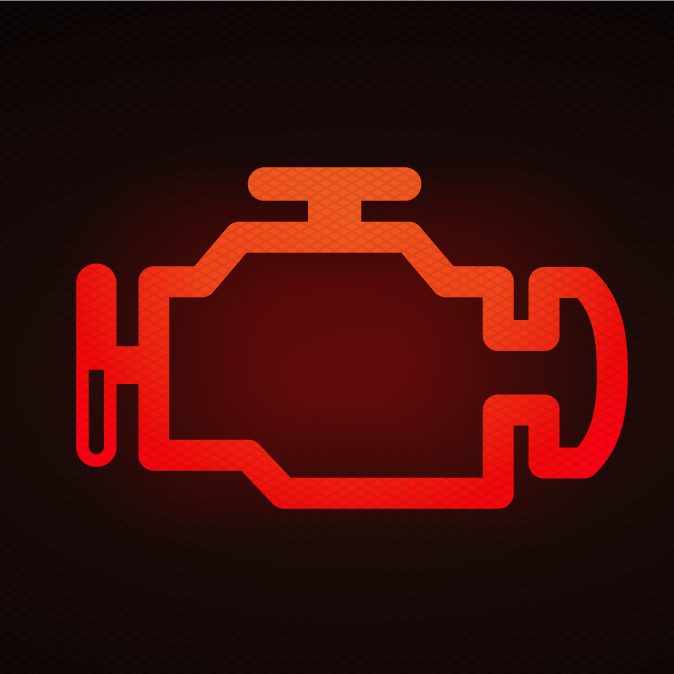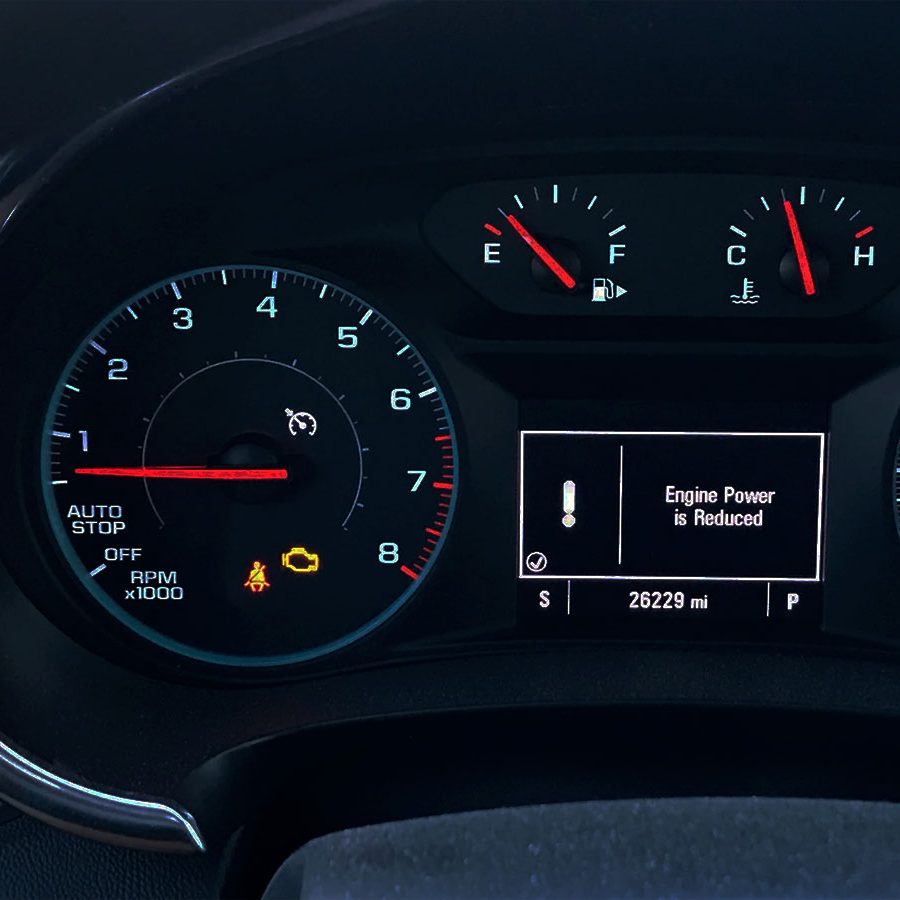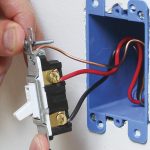Contents
Introduction
The check engine light is one of the most dreaded indicators on a vehicle’s dashboard. When it illuminates, it can create a sense of panic or uncertainty about the severity of the potential issue. Understanding what to do when the check engine light comes on can save you time, money, and stress. This comprehensive guide will cover how to respond to this warning sign, the common causes, diagnostic steps, and preventive measures to keep your car in optimal condition.
Immediate Steps to Take
Stay Calm and Assess the Situation
The first step when your check engine light comes on is to stay calm. Panicking will not help; instead, focus on safely assessing the situation. The check engine light can indicate a range of issues, from minor to severe. While it’s important to address the problem, most issues associated with this warning light do not require an immediate stop. Pay attention to how your car is driving—if it feels normal, you can continue to your destination but should plan to have it checked soon. If the car exhibits any unusual behavior, such as sudden loss of power or strange noises, safely pull over and turn off the engine to prevent further damage.
Check for Urgent Issues
Before heading to a mechanic or using a diagnostic tool, do a quick check for any urgent issues. Open the hood and look for obvious problems such as loose or disconnected wires, low fluid levels, or visible leaks. Ensure that your gas cap is properly tightened, as a loose gas cap is a common cause of the check engine light. Checking these simple things first can sometimes resolve the issue without further intervention. If you find a loose gas cap, tighten it and drive for a while to see if the light turns off.

Diagnosing the Problem
Using an OBD-II Scanner
One of the most effective ways to diagnose the issue is by using an OBD-II (On-Board Diagnostics) scanner. This device can read the codes from your car’s computer to identify the problem. You can purchase a basic scanner or find one at an auto parts store that offers complimentary diagnostics. Plug the OBD-II scanner into the port located under the dashboard (usually on the driver’s side) and follow the instructions to retrieve the error codes. Each code corresponds to a specific issue, which can help you understand the problem and determine the next steps needed to address it. Knowing the error codes can provide valuable insights and guide you in managing the issue.
Interpreting Diagnostic Codes
Interpreting the diagnostic codes is crucial for understanding the problem. You can find the meaning of these codes in the vehicle’s manual, online databases, or through the scanner’s accompanying app or booklet. Some common codes include P0171 for a lean fuel mixture, P0420 for a catalytic converter issue, and P0300 for a random/multiple cylinder misfire. Each code gives you information about what might be wrong, helping you decide whether you can address the issue yourself or if you need professional assistance. Accurate interpretation of these codes aids in identifying the problem’s severity and necessary actions.
Common Causes of the Check Engine Light
Minor Issues
Many minor issues can trigger the check engine light. These include a loose gas cap, low oil level, or a minor exhaust leak. While these issues are not immediately dangerous, they should still be addressed to prevent them from escalating into more significant problems. For instance, a loose gas cap can cause fuel vapor leakage, reducing fuel efficiency. Checking and resolving these minor issues can often turn off the check engine light and restore your vehicle to proper functioning.
More Severe Problems
The check engine light can also signal more severe issues such as a malfunctioning oxygen sensor, faulty catalytic converter, or problems with the ignition system. These issues require prompt attention as they can lead to significant engine damage and expensive repairs if left unaddressed. For example, a faulty catalytic converter can affect your car’s emissions and performance, while problems with the ignition system can lead to engine misfires and reduced fuel efficiency. Understanding the severity of these problems underscores the importance of timely intervention.

When to See a Mechanic
Indicators of Serious Issues
Certain indicators suggest that the check engine light points to a serious issue requiring professional attention. If the light is flashing, it indicates a severe problem such as a misfire that could damage the catalytic converter. Other signs include a noticeable loss of power, unusual noises from the engine, or visible smoke. If any of these symptoms accompany the check engine light, it’s crucial to see a mechanic immediately. Prompt action can prevent further damage and ensure your safety on the road.
Choosing a Reliable Mechanic
Choosing a reliable mechanic is essential for accurately diagnosing and repairing the problem. Look for mechanics with good reviews, certifications, and experience with your vehicle’s make and model. Word of mouth recommendations from friends and family can also be valuable. A trustworthy mechanic will provide a detailed diagnosis, explain the necessary repairs, and offer a fair estimate. Ensuring that your car is in capable hands guarantees quality service and resolution of the issue.
Preventive Measures
Regular Maintenance
Regular maintenance is key to preventing the check engine light from coming on. This includes routine oil changes, regular inspections, and timely replacements of worn-out parts. Keeping your vehicle well-maintained reduces the chances of unexpected issues and prolongs its lifespan. Adhering to the maintenance schedule recommended in your vehicle’s manual can prevent many common problems from arising, keeping your car running smoothly and efficiently.
Using Quality Fuel and Fluids
Using high-quality fuel and fluids can also help prevent issues that trigger the check engine light. Poor-quality fuel can lead to deposits in the engine and exhaust system, affecting performance and emissions. Similarly, using the recommended grade of oil and other fluids ensures that your car’s components are properly lubricated and functioning as intended. Investing in quality fuel and fluids is a small cost compared to the potential repairs caused by using substandard products.

Understanding Long-Term Implications
Ignoring the Check Engine Light
Ignoring the check engine light can have serious long-term implications. What might start as a minor issue can quickly escalate into a major problem if left unaddressed. For example, a faulty oxygen sensor might not affect performance immediately but can lead to reduced fuel efficiency and eventually damage the catalytic converter. Regular attention to the check engine light ensures timely intervention, preventing further damage and costly repairs.
Financial Considerations
Addressing the check engine light promptly can also have financial benefits. Early diagnosis and repair of issues can prevent more severe damage that would require expensive repairs or part replacements. Additionally, a well-maintained car is more fuel-efficient and has a higher resale value. Investing in timely maintenance and repairs saves money in the long run by avoiding major issues and improving overall vehicle performance.
Conclusion
The check engine light is an important indicator that should not be ignored. Understanding what to do when it comes on, from immediate steps to long-term maintenance, can save you time, money, and stress. By staying calm, diagnosing the problem, addressing common causes, and seeking professional help when needed, you can ensure your vehicle remains in good working condition. Regular maintenance and attention to detail can prevent many issues, keeping your car running smoothly and efficiently. Taking proactive steps to address the check engine light fosters vehicle longevity, safety, and reliability.

